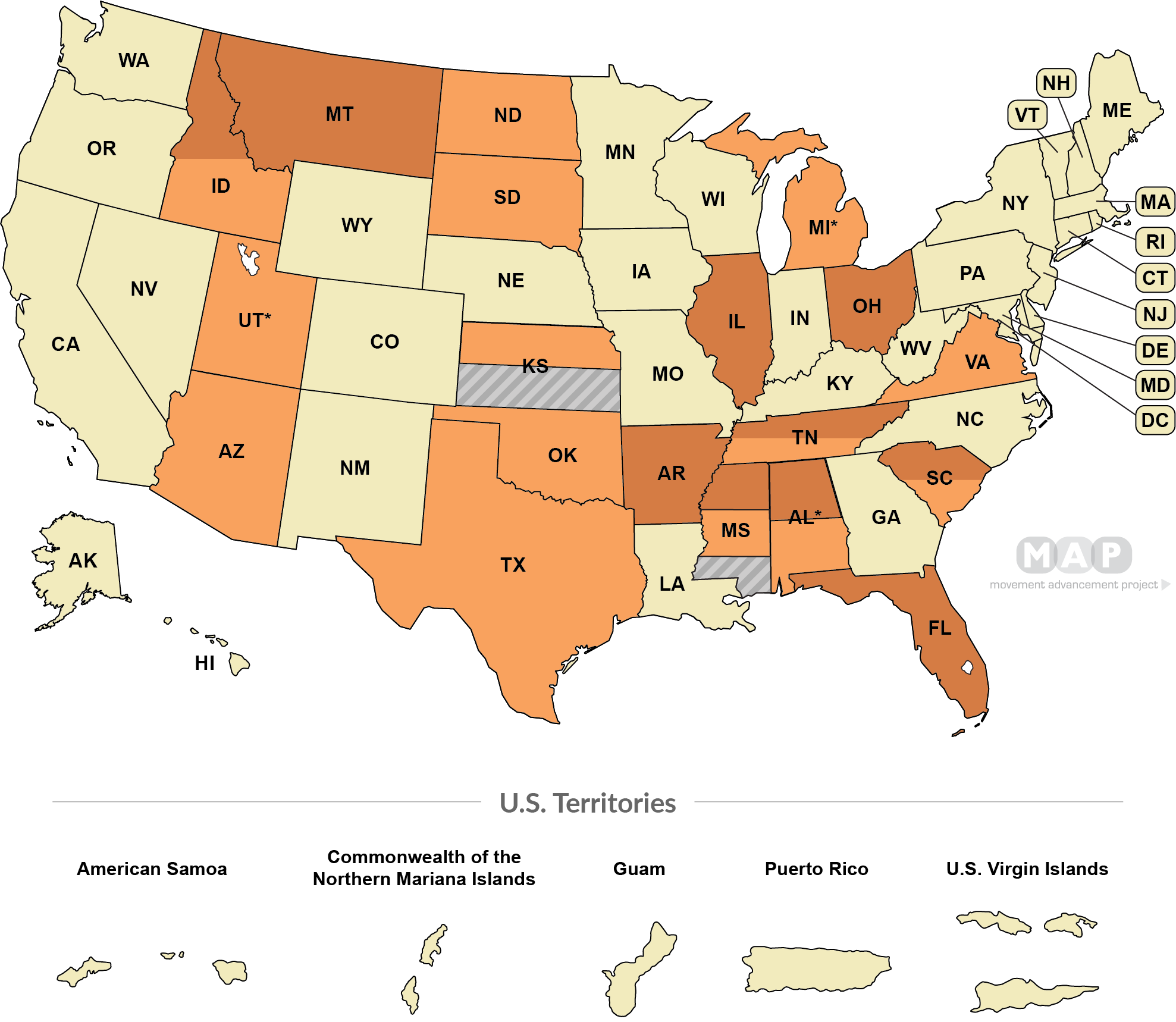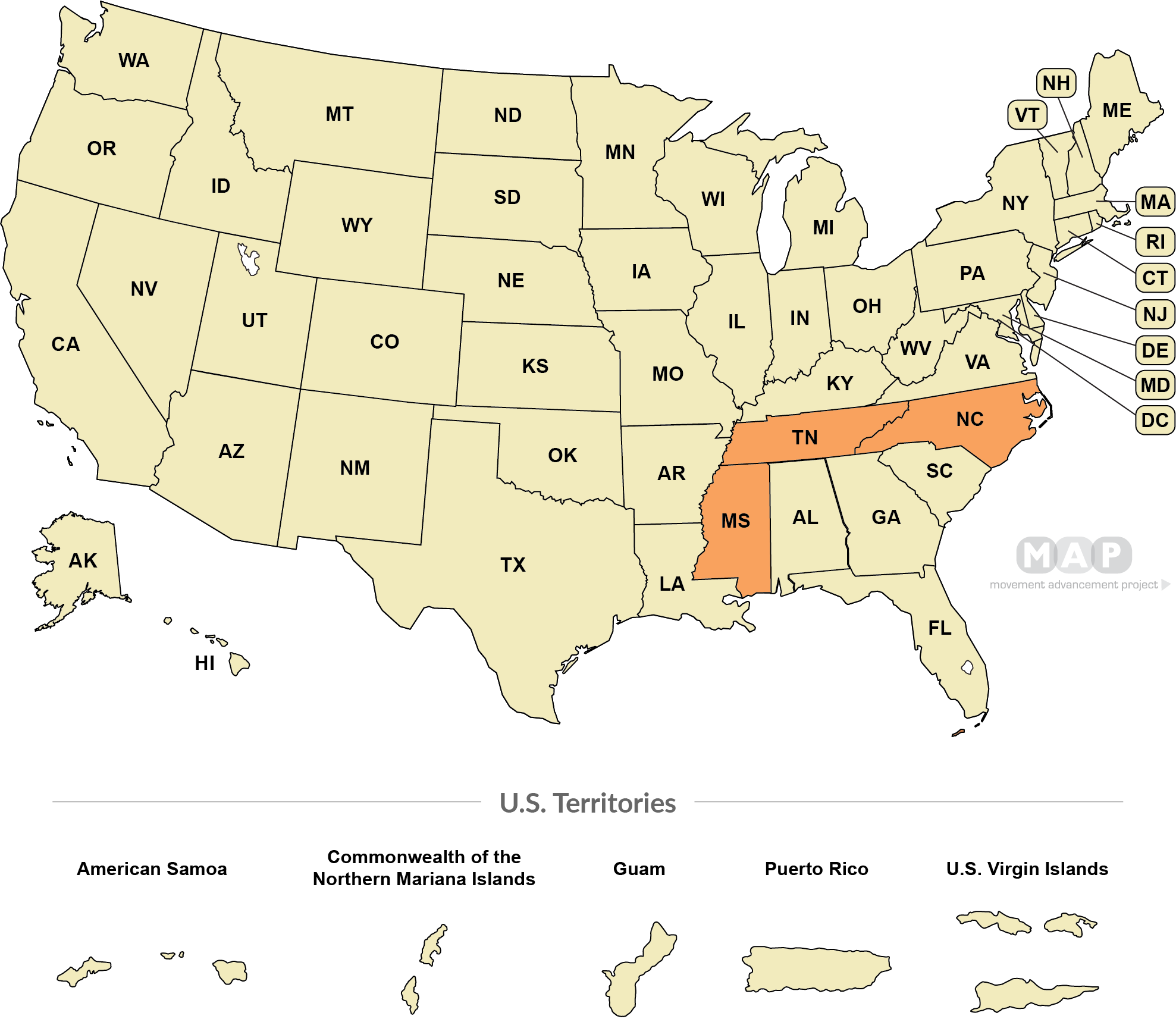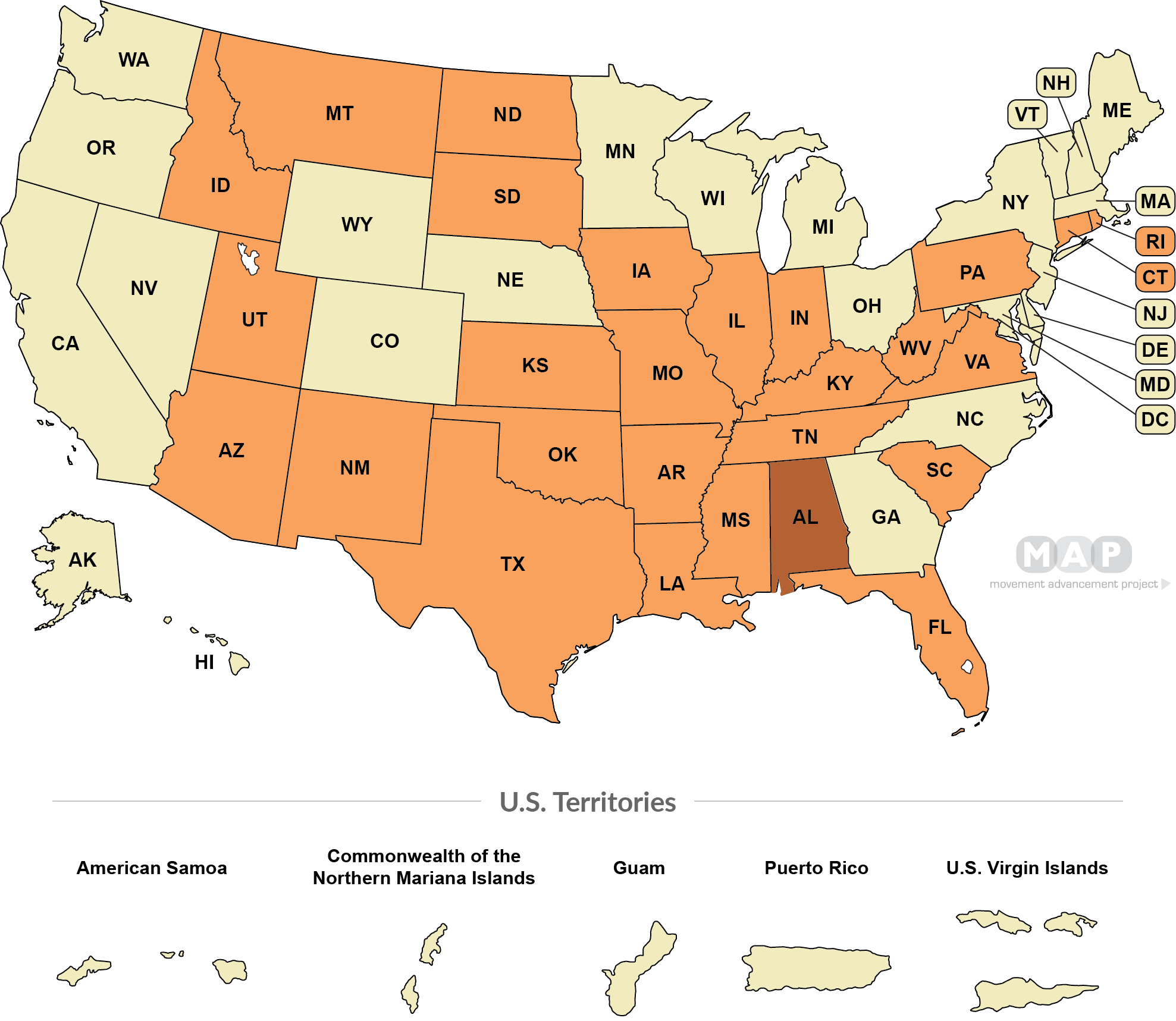| State |
Broad Religious Exemption |
Targeted Adoption/Child Services Denial |
Targeted Marriage Services Denial |
Targeted Medical Professionals Denial |
Targeted Marriage License Denial |
| |
Citations
|
Citations
|
Citations
|
Citations
|
Citations
|
| Alabama |
State does not have this law |
State does not have this law |
|
State does not have this law |
|
| Alaska |
|
|
|
|
|
| American Samoa |
|
|
|
|
|
| Arizona |
State does not have this law |
State does not have this law |
|
|
|
| Arkansas |
State does not have this law |
|
|
State does not have this law |
|
| California |
|
|
|
|
|
| Colorado |
|
|
|
|
|
| Connecticut |
State does not have this law |
|
|
|
|
| Delaware |
|
|
|
|
|
| District of Columbia |
|
|
|
|
|
| Florida |
State does not have this law |
|
|
State does not have this law |
|
| Georgia |
State does not have this law |
|
|
|
|
| Guam |
|
|
|
|
|
| Hawaii |
|
|
|
|
|
| Idaho |
State does not have this law |
State does not have this law |
|
State does not have this law |
|
| Illinois |
State does not have this law |
|
|
State does not have this law |
|
| Indiana |
State does not have this law |
|
|
|
|
| Iowa |
State does not have this law |
|
|
|
|
| Kansas |
State does not have this law |
State does not have this law |
State does not have this law |
|
|
| Kentucky |
State does not have this law |
|
|
|
|
| Louisiana |
State does not have this law |
|
|
|
|
| Maine |
|
|
|
|
|
| Maryland |
|
|
|
|
|
| Massachusetts |
|
|
|
|
|
| Michigan |
|
State does not have this law |
|
|
|
| Minnesota |
|
|
|
|
|
| Mississippi |
State does not have this law |
State does not have this law |
State does not have this law |
State does not have this law |
State does not have this law |
| Missouri |
State does not have this law |
|
|
|
|
| Montana |
State does not have this law |
|
|
State does not have this law |
|
| Nebraska |
|
|
|
|
|
| Nevada |
|
|
|
|
|
| New Hampshire |
|
|
|
|
|
| New Jersey |
|
|
|
|
|
| New Mexico |
State does not have this law |
|
|
|
|
| New York |
|
|
|
|
|
| North Carolina |
|
|
|
|
State does not have this law |
| North Dakota |
State does not have this law |
State does not have this law |
|
|
|
| Northern Mariana Islands |
|
|
|
|
|
| Ohio |
|
|
|
State does not have this law |
|
| Oklahoma |
State does not have this law |
State does not have this law |
|
|
|
| Oregon |
|
|
|
|
|
| Pennsylvania |
State does not have this law |
|
|
|
|
| Puerto Rico |
|
|
|
|
|
| Rhode Island |
State does not have this law |
|
|
|
|
| South Carolina |
State does not have this law |
State does not have this law |
|
State does not have this law |
|
| South Dakota |
State does not have this law |
State does not have this law |
|
|
|
| Tennessee |
State does not have this law |
State does not have this law |
|
State does not have this law |
State does not have this law |
| Texas |
State does not have this law |
State does not have this law |
|
|
|
| U.S. Virgin Islands |
|
|
|
|
|
| Utah |
State does not have this law |
State does not have this law |
|
|
|
| Vermont |
|
|
|
|
|
| Virginia |
State does not have this law |
State does not have this law |
|
|
|
| Washington |
|
|
|
|
|
| West Virginia |
State does not have this law |
|
|
|
|
| Wisconsin |
|
|
|
|
|
| Wyoming |
State does not have this law |
|
|
|
|





